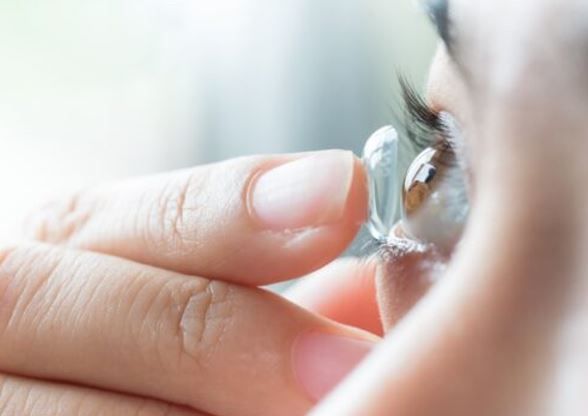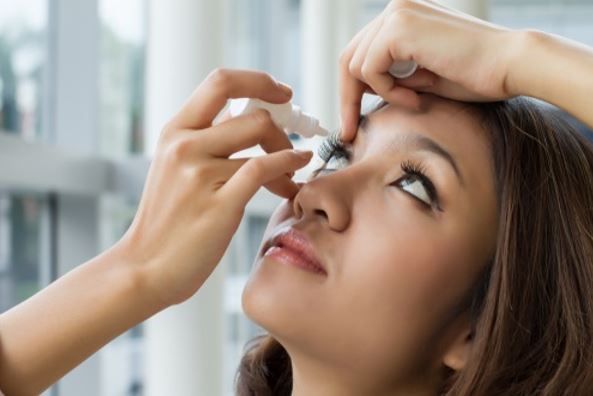Management of Myopia and Presbyopia
What are the Risk Factors of Myopia?
In most cases, nearsightedness starts during childhood. The main risk factor for myopia is genetics.
Another risk is eye fatigue that comes from focusing while reading or using devices- some believe that our collective increased time spent on computers and handheld devices is contributing to increased levels of myopia.
Little time spent outdoors can also be a risk factor for myopia – research suggests that spending less than 45 minutes per day outdoors can increase the risk of developing myopia,
What are the Different Types of Myopia?
Myopia is a refractive error, and its intensity is measured in diopters (D). -0.25 to -3.00 D represents mild myopia, while a measurement of -6.00 and above means there’s high myopia. Moderate nearsightedness comes at -3.25 to -6.00D. The following are two main types of myopia based on intensity:
Degenerative/Pathological Myopia
While it’s extremely rare, degenerative myopia may eventually lead to legal blindness. It begins at childhood and progresses at a fast rate.
This form of myopia increases the risk of developing other conditions like cataracts. It can also cause glaucoma, retinal detachment, bleeding of internal eye blood vessels, and myopic muscular degeneration. Heredity is the main risk factor.
Simple Myopia
It is also referred to as non-pathological or school myopia. Simple myopia is the most common type.
It comes with a moderate intensity of between -3.25 to -6.00D. Usually, this condition slows down after adolescence. In some cases, it may even become stable.
What are the Symptoms of Myopia?
Some of the main symptoms exhibited by people with nearsightedness include:
- Blurred distance vision
- Headaches
- Eye fatigue
- Squinting
How is Myopia Treated?
The treatment of myopia lies in controlling its progression. There’s currently no cure for the condition.
Methods used in slowing down the condition are usually referred to as myopia control.
What is Myopia Control?
These are measures taken by ophthalmologists and optometrists towards controlling nearsightedness. Through myopia control, the risk of developing complications such as cataracts are minimized.
What are the Different Types of Myopia Control?
Just as there are different forms of myopia, there are also different treatments. The most commonly used treatment options are:
- MiSight 1 day contact lenses
- Orthokeratology/Corneal Refractive Therapy
- Atropine eye drops
- Multifocal eyeglasses
- Multifocal contact lenses
Factors that influence the type of method used include myopic intensity and age.
At Mid-Michigan Eye Care, we provide our patients with all these treatment options.
MiSight 1 day
Over the last 40 years, the incidence of nearsightedness, or myopia, has doubled worldwide. Given the difficulties that high levels of nearsightedness cause, researchers have been looking for ways to slow or halt the progression of myopia. At Mid-Michigan Eye Care, we are proud to feature MiSight contact lensMiSight 1 day is a daily soft contact lens worn during the day and thrown away at night.
Children from the age of 8 to 12 can have a prescription. They can wear them for 10 hours a day for six days a week to receive the full benefit.
MiSight lenses use concentric rings with different powers so that the peripheral vision isn’t as focused. This tricks the eye into slowing down its growth so that it doesn’t get too long.
Is it Safe for Children to Use MiSight Lenses?
MiSight 1 day lenses have been studied for use, safety, and results. Its FDA approval for children as young as 8 shows it to be beneficial and safe.
As with all contacts, MiSight does increase the risk for eye infections. Ensuring your child practices good contact lens hygiene can reduce this risk.
What are the Advantages of MiSight 1 day?
Peer-reviewed studies show that MiSight can slow myopia progression for your child. There’s also no cleaning or disinfection needed when wearing the lenses.
The soft lenses are comfortable to wear. Unlike other types of lenses, your child’s vision is clear immediately after insertion.
Who is a Good Candidate for MiSight?
MiSight is ideal for children who:
- Want to correct myopic vision and slow down myopic progression
- Have eyes that are free of diseases
- Are between the ages of 8 and 12 at the start of treatment
- Have a prescription of -0.75 to -4.00 diopters with less than 0.75 diopters of astigmatism
MiSight isn’t designed to correct astigmatism. Some children with smaller eyes also have trouble using these types of lenses, but they are easy to use.
Our eye doctors can test your child and discuss whether MiSight 1 day is the best solution for them.
Wondering if MiSight 1 day could be the right treatment for your child? Contact the eye doctors at Mid-Michigan Eye Care for more information and to schedule an appointment today!
Orthokeratology
Special lenses referred to as ortho-k contact lenses are used in this method of treatment. These lenses are gas permeable contact lenses.
Also known as Corneal refractive therapy, this technique involves the use of FDA-approved therapeutic contact lenses to reshape your cornea while you are asleep.
These apply pressure on the cornea while the user is resting. Over time, there’s a decrease in the pace at which the eyeball elongates. After being used overnight, the contacts’ effects last through to the next day.
By using ortho-k lenses, the patient won’t need glasses or contacts to see clearly at a distance.
Several studies prove that orthokeratology is more effective for myopia control compared to glasses or contacts. With continued use, it highly reduces the elongation of the eye. It may even be able to halt myopia progression in some patients!


Atropine Eye Drops
This is more of a short-term control alternative. Atropine eye drops provide temporary relief from myopia and require repeated use to maintain the effects.
These drops work by dilating the pupil and inhibiting the accommodation of the eye. By disabling the eye’s focal mechanism, eye fatigue is prevented.
This is important because eye fatigue is a known factor for encouraging myopia. Its effects may last for up to eight days.
Many doctors have reservations about using atropine eye drops to control myopia. As a short-term treatment, it works quite well.
But after the first year of treatment, it becomes less effective in treating myopia. There is also not much known about the long-term effects of the medication.
Multifocal Contacts
These contacts correct refractive errors by ensuring clear visual focus at all distances. This means that for myopic individuals, their distant vision is no longer blurred.
Multifocal contacts are made with rigid gas permeable materials. These materials allow oxygen to enter the eye.
These contacts reduce the progression of myopia more than soft lenses. In children who wear multifocal contacts for nearsightedness, a 50% reduction in symptoms occurred.
At Mid-Michigan Eye Care, we keep up with the latest eye care technology. You can rest assured that we’ll only provide you with high-quality contact lenses and care.
These glasses work in the same way as multifocal contacts. They help the wearer have clear vision at all distances. They are a good option for patients who can’t tolerate wearing contact lenses.
Multifocal Eyeglasses
Presbyopia
Presbyopia is a condition that occurs as a person ages, which causes the lens of the eye to become less elastic. This results in issues with near vision for people 40 years old and over, which can cause difficulties with simple everyday tasks like reading, writing, or working on a computer. Fortunately, our doctors can easily diagnose presbyopia as part of a routine comprehensive eye exam. Once diagnosed, we can offer a number of treatment options to make sure you enjoy your best vision at all times.
Here are the most common treatments for presbyopia correction:
Bifocal and Progressive Lens Eyeglasses
Bifocal and progressive lens eyeglasses are far and away the simplest and most commonly prescribed treatment for presbyopia.
A bifocal lens offers two distinct sections in a single lens. The primary section helps correct for distance vision, while the secondary section, usually a much smaller section of the lens, allows for clear near-vision.
Progressive lenses function in a similar manner. However, instead of the distance and near vision sections being in distinct zones, they’re more blended. This offers a more seamless viewing experience, though it can sometimes take longer to get used to.
Contact Lenses
There are two common types of contact lenses when it comes to the treatment of presbyopia with contacts:
Monovision contact lenses come in different prescriptions for each eye; one eye is fitted with a lens for distance vision and one for near vision. This solution may not be for everyone, however, as it can sometimes take some time to get used to.
Multifocal contact lenses work in much the same way that multifocal eyeglasses do. They’re designed to offer clear vision across distance, moderate and near vision. They come in various types, including soft disposable, rigid gas permeable, and hybrid contact lenses.
Corneal Inlays
Corneal inlays are very small implantable lenses that your eye doctor surgically places in the cornea to address issues with presbyopia. There are a few different kinds of corneal inlays currently available. Each of these lenses works in a slightly different way:
Corneal inlays that rely on exploiting the pinhole effect are implanted in the non-dominant eye allowing the lens to extend the patient’s overall range of vision.
Corneal inlays that are made from biocompatible hydrogel are designed to imitate the cornea in your eye. This inlay treats presbyopia in the same way as multifocal contact lenses, changing the curvature of the eye, and altering the way light enters and is focused on the retina.
Monovision LASIK and Cataract Surgery Lens Implantation:
Although traditional LASIK and cataract surgery procedures don’t address presbyopia, certain variations can help reduce symptoms and minimize your reliance on bifocals or reading glasses.
Monovision LASIK and cataract surgery lens implantation is the most widely used surgical correction for presbyopia. It corrects the dominant eye so that you can see better at a distance while leaving the less-dominant eye nearsighted. This relies on the idea that the non-dominant eye is only mildly nearsighted, so it is still able to see things up close without the need for reading glasses.
Refractive Lens Exchange and Multifocal Lens Implants:
For refractive lens exchange (RLE), an eye surgeon replaces your eye’s natural lens using an artificial intraocular lens (IOL). The IOL improves near vision and reduces your need for near vision solutions such as reading glasses. There are multiple strategies that can be employed to address your particular case, including different types of lenses in each eye. Speak to your eye doctor to find out what will work best for you.
Prescription Eye Drops (Vuity by Abbvie)
Eye drops are among the newest solutions for the treatment of presbyopia and are most effective in patients who have just begun to experience symptoms. They are miotic drops, meaning they rely on making the pupil contract to create a “pinhole effect” that mimics the eye’s natural ability to focus. This allows for improved vision close-up in patients with presbyopia.
For more information on how we can help you see your best with presbyopia, contact our Mid-Michigan Eye Care team today!

